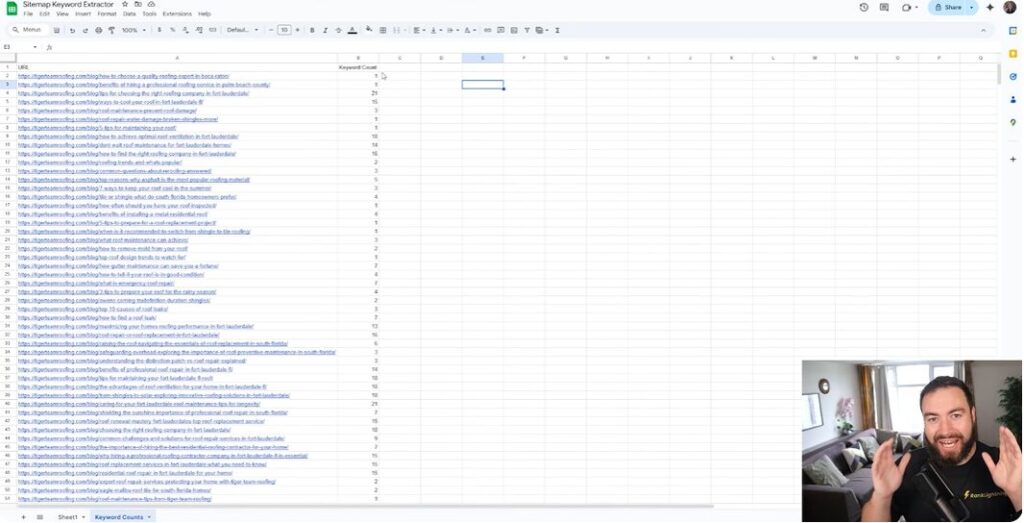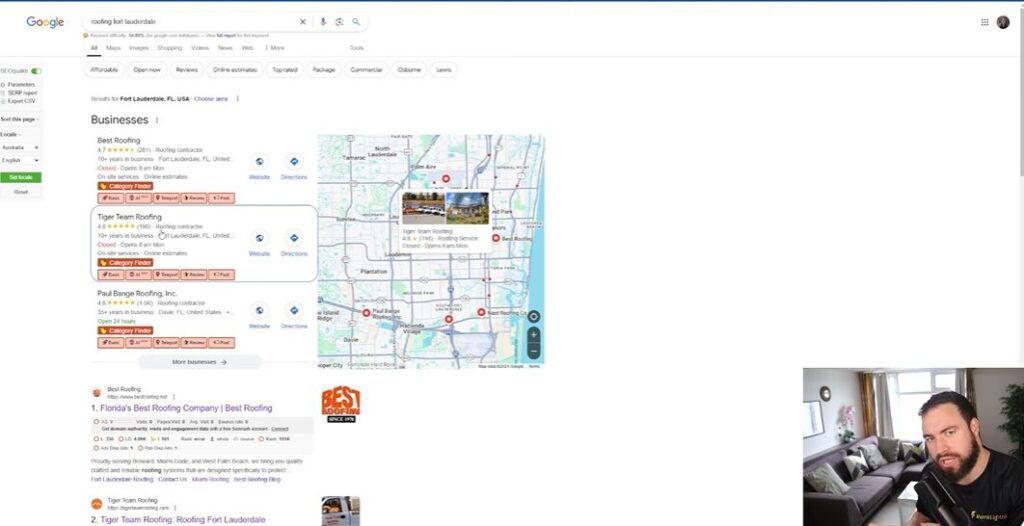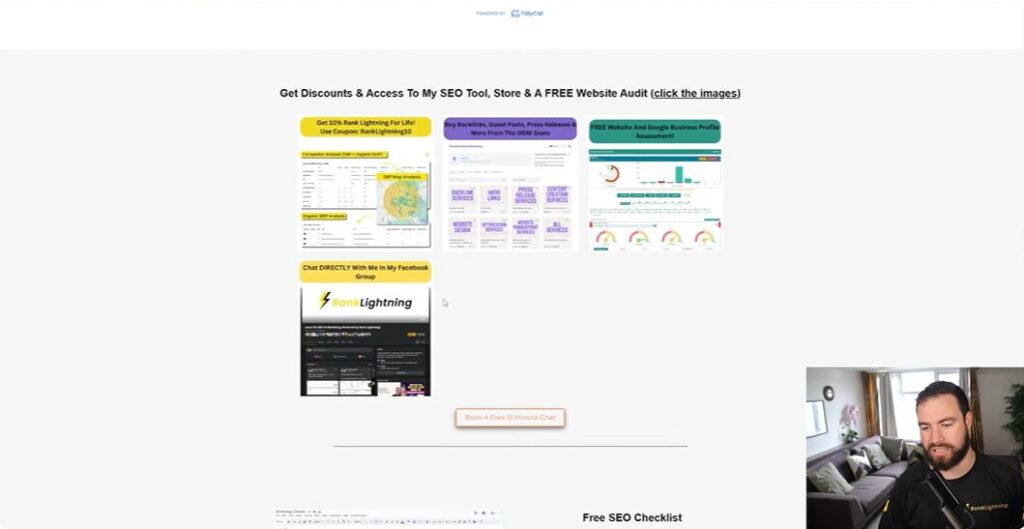Hey there, fellow marketers! I remember the time I was confused about why some competitors outranked me despite having weaker backlinks and fewer reviews. It was frustrating until I stumbled upon a breakthrough in competitor keyword analysis that transformed my SEO strategy. This effective SEO technique is so effective that I feel obliged to share it with all of you. Here are some SEO secrets that can also be useful for your business. Enjoy SEO tips and tricks that I have prepared in this article.
TL;DR: Discover a powerful method to analyze competitor keyword usage through a customizable spreadsheet, enhancing your SEO strategy and boosting your rankings in search results.
Table of Contents
The Power Of Competitor Keyword Analysis
Why Are Keywords Important In SEO
When we think about SEO, we often forget that keywords are at the heart of it all. Keywords are the words and phrases that potential customers type into search engines. Without them, how can we even expect to appear in search results? It's like playing hide-and-seek without calling out “ready or not.”
Understanding their importance is essential. As a business, if we target the right keywords, we can drive more traffic to our websites. But how do we identify those magic phrases?
Unlocking Hidden Opportunities Through Competitor Analysis
Here's where competitor analysis becomes our best friend. By examining what our competitors are doing, we can unveil hidden opportunities in our own strategies. Have you ever wondered what makes your competitor rank above you? I mean, their secret sauce could be right under our noses.
- Identify top-performing keywords. Look at which keywords bring traffic to their site.
- Analyze their content. How are they structuring their articles? What's their tone?
- Review backlinks. Where are they getting backlinks from? Can we get some too?
Digging Into High-Ranking Competitors’ Secrets
Ever notice how some competitors seem to dominate search results? Their success often lies in the way they utilize keywords. When I analyze a competitor’s sitemap, I find out exactly how many times certain keywords appear. Recently, I experimented with “roofing” and discovered - it was mentioned over 35,000 times!
Now, that sounds exaggerated, right? But it's true. Even if some businesses have fewer reviews or less authority, their strategic keyword usage can outweigh those factors. This is what I call the hidden gems in their approach.
The Correlation Between Keyword Density And Search Ranking
But why does keyword density matter? It’s simple. Search engines use algorithms to determine how relevant our content is. When a term appears frequently, it strengthens that relevance in the eyes of Google's algorithms.
Think of keyword density as seasoning in a recipe. Too little won't unlock the flavors, while too much can ruin the dish. We need to find the perfect balance. When I was working with keyword data, I always aim for a sweet spot that highlights the expertise without overwhelming the content.
To conclude this section, let’s remember this: analyzing our competitors’ keywords doesn’t just give us insights; it sets the stage for our SEO success.
Step-by-Step Guide To Analyzing Competitors' Keywords

Understanding your competitors' keyword strategies can give you a significant edge in the SEO game. In my journey, I've developed a straightforward method to zero in on these vital keywords. Let's break it down step by step.
1. Downloading The Keyword Analysis Spreadsheet
The first step is simple yet crucial. I’ve created a keyword analysis spreadsheet that allows you to track and analyze keyword usage. You can find this spreadsheet online, available for free. Just download it and get ready for the next steps. Trust me, this resource is a game-changer!
2. Inputting Competitor's Sitemap For Keyword Extraction
Next, we need to put this tool to work. Grab your competitor’s sitemap.xml file. This is like a roadmap of their website. It tells you where all the important pages are. Simply copy and paste the URL of their sitemap into the designated cell in your spreadsheet.
Once you do that, the magic happens. The spreadsheet will autonomously pull the data and start extracting keyword mentions. It’s like having a personal assistant working exclusively on your SEO analysis!
3. Setting Target Keywords For Crawling
Now comes the fun part - setting your target keywords. What words or phrases do you think are essential for your business? For instance, if you’re in the roofing business, use “roofing” as your target keyword. By focusing on relevant terms, you can pinpoint how well your competitors rank for those keywords.
Why Is This Important
It helps you determine how often those keywords appear on your competitors' pages. You see, even if they don’t have the highest ratings or best backlinks, their keyword density might be what keeps them at the top of the search results.
4. Interpreting The Output For Actionable Insights
Finally, let’s dive into the output of your analysis. The spreadsheet generates a wealth of information, showing how many times your target keyword appears across the site. For example, you might see that the keyword “roofing” pops up hundreds or even thousands of times!
That’s valuable data. It tells you what you’re up against. You can also see if your competitors are using variations of the keyword, which can further enhance their SEO potential.
“By consistently discussing core phrases across their pages, competitors can significantly improve their rankings.”
This whole process allows you to gather insights without having to reinvent the wheel. It’s about understanding what works, so you can implement similar strategies with your content. So, give it a shot! You might just discover the key to unlocking your website's potential.
Understanding Keyword Mentions: What Google Cares About

Differentiating Between Visible Content And Backend Data
When we think about keyword mentions, it's easy to focus only on what we see on the webpage. But there’s more beneath the surface. What about the backend data? This is where the real magic happens.
Visible content is what your visitors read. Backend data consists of the metadata, source code, and other elements that Google uses to assess your page. I often remind myself that Google is not just scanning for pretty words. It digs deeper into code to uncover hidden gems of information.
Learning How Search Engines Interpret Keyword Density
Keyword density can sound complicated, but it’s quite simple. It's the ratio of a specific keyword to the total number of words on a page. For example, if "SEO" appears 10 times in a 1,000-word article, that’s a 1% density. But what does Google care about this number?
You might ask, why does this matter? Well, search engines use keyword density as one of many factors to determine relevance. Too little, and Google thinks your article isn't focused enough. Too much, and it might see you as spammy. Finding that sweet spot is key to engaging both users and search engines.
The Significance Of Metadata In SEO
Next is metadata. This is often overlooked, but it’s crucial for SEO. Metadata includes title tags, meta descriptions, and alt text. This data helps search engines understand the content of your pages.
For instance, a well-crafted title tag can significantly enhance your click-through rates. Consider it the storefront of your content. Would you want a dull sign outside your shop? Probably not! Metadata serves the same purpose in the digital world.
Aligning Your Content Strategy With Discovered Keyword Metrics
Lastly, aligning your content strategy with keyword metrics is vital. I often analyze competitors' use of keywords, especially how many times they mention specific terms. It’s fascinating! Using tools to assess keyword counts can give us insights that are hard to find otherwise.
Once we understand what works for them, we can refine our own strategies. Are there phrases that appear more frequently? Should we consider using them too? This correlation can lead to improved rankings. After all, if they’re doing something right, shouldn’t we learn from it?
As I explore this topic... let’s be clear: mastering keyword mentions is not just about stuffing our content with keywords. It’s about crafting a holistic approach that benefits our audience while appeasing the search engine algorithms. I’m excited to see how we can apply these insights for better SEO results!
How To Use The Keyword Sitemap Sheet

Using The Keyword Sitemap Sheet
Have you ever wondered how competitors dominate search rankings? Indeed, they have SEO secrets. One powerful tool in your SEO tips and tricks is the keyword sitemap sheet. It's designed to evaluate your competitors based on specific keywords.
To start, you'll want to grab your competitor's sitemap, usually found in their sitemap.xml. Copy that link and paste it into the designated cell in the spreadsheet. Instantly, it will pull keyword mentions from across their site. It's almost like having your own personal SEO detective!
For example, let’s say we focus on the keyword "roofing." Once you paste the sitemap, the tool quickly counts how many times "roofing" appears on their site. This process usually takes just a couple of minutes. In no time, you'll gain insights into why they might be ranking higher than you.
Why Is It Important
Now, why is this analysis vital? It's straightforward: keyword density can significantly impact your SEO performance. By observing how frequently competitors discuss core phrases like "roofer in Fort Lauderdale," you gain clues to their success.
- Understanding Visibility: Keywords may not always be visible to users, but Google notices them. Sometimes, the total mention count can be hidden in the source code, revealing even greater usage than what’s visible on the surface.
- Informed Strategy: This tool provides a target for your own keyword mentions. If a competitor has cited "roofing" over 35,000 times, imagine what that means for your own content strategy!
Furthermore, simply having more reviews or a strategic location doesn’t guarantee success. A solid keyword strategy can level the playing field, making it essential to make this tool a part of your SEO routine.
By diving deep into your competitors' keyword practices using this sheet, you're not just keeping up - you're positioning yourself for growth. Remember, every insight gained is a step toward enhancing your own SEO efforts.
Let's leverage this tool and turn insights into action! I encourage you to explore this resource further and even consider other spreadsheets I offer, like the backlink monitor or SEO forecast calculator. Your path to better SEO outcomes is just a click away!
How To Use The Data Discovered To Help With SEO Results

Understanding how to leverage data from competitors can profoundly influence our SEO game. Have you ever wondered how some websites dominate the search results? A lot of it comes down to how often they utilize specific keywords. Let's break down how we can tap into this knowledge.
1. Analyze Competitors' Websites
First off, you need to analyze your competitors. Not just a cursory glance, but a deep dive into their sites. I've developed a unique spreadsheet for this purpose. It scrapes data right from competitors’ sitemaps based on the keywords you choose. Take, for example, the keyword "Fort Lauderdale." The tool tallies how many times this keyword appears on each page. Pretty neat, right?
2. The Importance Of Keyword Frequency
You might be thinking, “Why does keyword frequency matter so much?” Well, it's simple. When we look closely at how often keywords are mentioned, we're not just gathering numbers; we're uncovering a strategy. Consistently discussing a core phrase across multiple pages helps establish that keyword's relevance. Sometimes, a site can rank high even with fewer backlinks, thanks mainly to smart keyword usage.
3. Practical Steps With The Spreadsheet
Using the spreadsheet is straightforward. Start by getting the sitemap.xml from a competitor's site. Then, you just copy and paste this sitemap into the tool. It extracts the data quickly; I usually see results in just a couple of minutes. For instance, I once tested this with the keyword “roofing.” The sheet spit out a count that was astonishing!
4. What Google Sees Vs. What Users See
One of the biggest missteps we can make is overlooking the source code. What Google interprets can often differ from what users see on the webpage. In a recent analysis, I discovered "roofing" was mentioned 168 times in the source code, while visually, it showed up only nine times. Can you see the gap here? This is why we need to dig deeper into our own content!
5. Setting Targets With Competitor Insights
With tools like this, we gain insights into not just keyword frequency but also what our target numbers should be. In one instance, I noted that the keyword “roofing” was present over 35,000 times on a competitor's site. Can you imagine how many related articles or pages you’d need to create to compete? This shows how vital a strong keyword strategy is for SEO success.
Now, remember, even with some competitors having better reviews or locations, their smarter keyword tactics might be why they’re reaching those top spots. By shifting our focus onto keyword density, we can dramatically enhance our own SEO efforts.
Conclusion: Implementing Insights For Growth
As I look back on the journey we’ve taken together, it’s amazing to reflect on the SEO tips and tricks we discussed for enhancing your SEO results. Each step we explored, from analyzing competitors' websites to leveraging the unique spreadsheet tool I provided, serves as a reminder of how powerful data can be in driving growth. It’s not just about what we implement; it’s about how we measure and analyze our efforts.
Taking the time to analyze your competitors through the keyword density method isn’t just a one-time task. It's a journey that requires consistency. Remember how we delved into crawling sitemaps? That manual yet effective process can yield significant insights if repeated periodically. Have you had a chance to experiment with the spreadsheet I shared? If not, I strongly encourage you to do so. It’s a game changer!
Through consistent use of tools that offer data-driven insights, we empower ourselves. Persistent analysis of keyword performance can lead to breakthroughs that significantly enhance your rankings. It’s like peering into a treasure chest of opportunities that many overlook. My journey into SEO has taught me one thing: the more we dig, the more we discover.
Reflecting on my own path, I have faced challenges, but the thrill of learning and improving has kept me moving forward. I remember when I struggled to capture visibility for keywords I thought were pivotally important. But through analyzing competitors and understanding their keyword strategies, I found the real story that was begging to be told. It has been an enlightening experience that I hope inspires you to take the leap as well.
Let’s not forget the expertise gained along this journey - it's invaluable. As you apply these SEO secrets and look through the lens of SEO from both your and your competitors’ perspectives, the results can be transformative. So, as you wrap up your analysis, I hope you take these insights to heart and consistently nurture your SEO tactics. After all, success in this field often relies on those who don’t just sit back but actively engage with their data.




